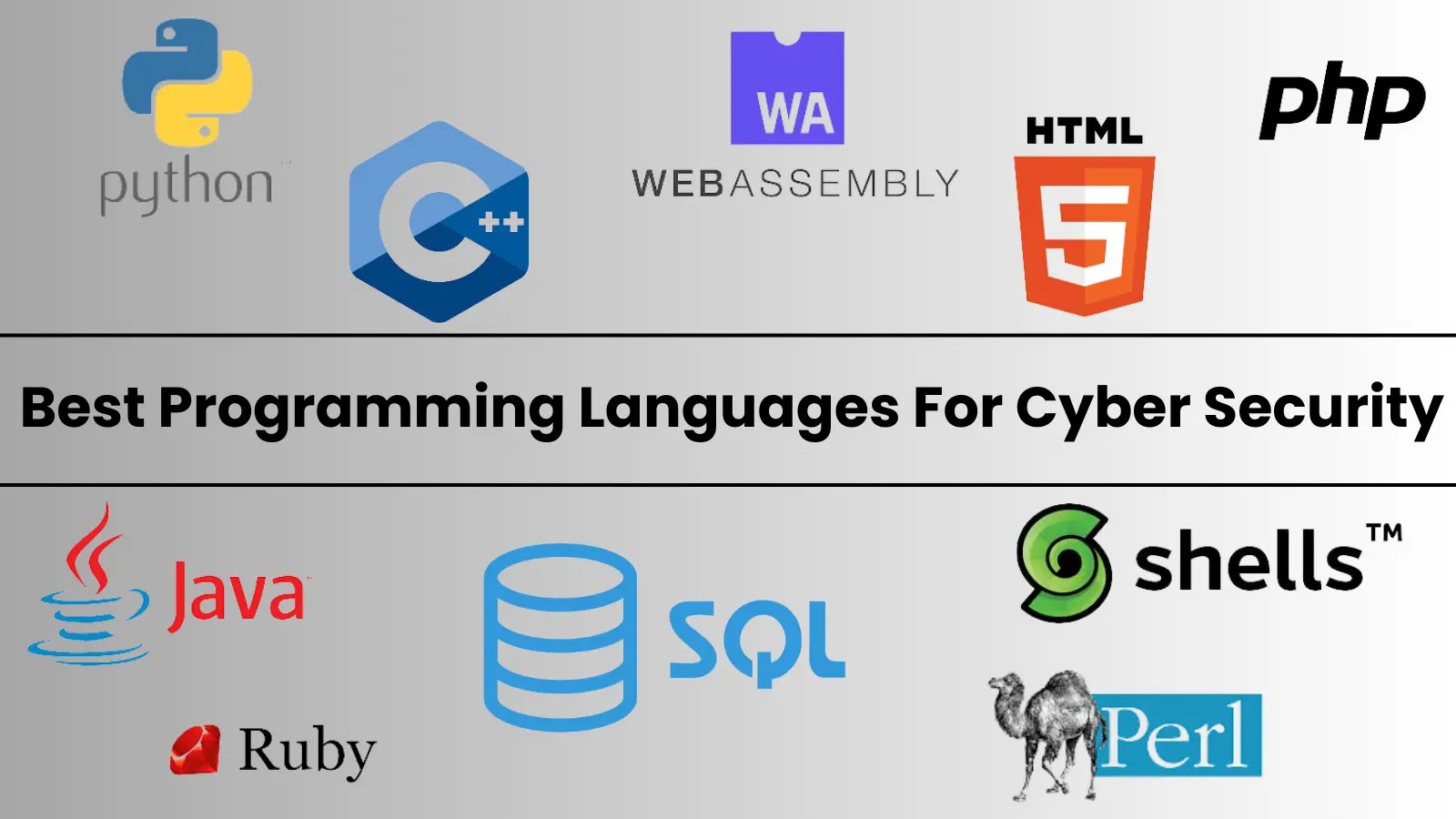.png
)
%20(1).webp)
.webp)

.webp)
.webp)
.webp)
.webp)


.webp)
Introduction
In the digital age where cybersecurity is paramount, understanding and utilizing the right programming languages can be a game-changer. Programming languages are the backbone of effective cybersecurity strategies, enabling professionals to automate tasks, analyze data, and fortify systems against cyber threats.
Why Programming is Critical in Cybersecurity
Programming languages empower cybersecurity experts to create sophisticated tools and scripts that automate the monitoring and defense mechanisms critical to protecting digital assets. Here’s what these languages can do:
- Automation of repetitive tasks: Frees up time for complex analyses.
- Enhanced vulnerability detection: Scripting custom tests and identifying security gaps.
- Development of security tools: Building customized solutions to enhance defensive frameworks.
Top 10 Programming Languages for Cybersecurity
1. Python
Python is a powerhouse in the programming world due to its simplicity and robust library. It’s particularly effective for creating cybersecurity tools, automating tasks, and conducting system analysis.
2. JavaScript
JavaScript is essential for web development and understanding client-side scripts can help in identifying and mitigating XSS (Cross-Site Scripting) vulnerabilities.
3. C++
C++ provides a deep understanding of system internals and is perfect for developing performance-critical security software.
4. Java
Java is widely used in enterprise environments, making its knowledge crucial for securing corporate systems.
5. PHP
PHP is vital for server-side scripting and understanding it is key in defending against web attacks such as SQL injection and data breaches.
6. SQL
SQL helps manage databases securely, an essential skill for preventing data manipulation through SQL injection attacks.
7. Assembly
Assembly language helps in understanding malware at a fundamental level, crucial for reverse engineering and malware analysis.
8. Ruby
Ruby is known for its rapid prototyping capabilities, which can be particularly useful in security tool development and simulation exercises.
9. Bash/Shell
Bash/Shell scripting is excellent for automating the daily tasks of system administration that maintain a secure environment.
10. Perl
Perl, with its powerful text-processing capabilities, is excellent for writing scripts that monitor and analyze logs, aiding in the detection of system anomalies.
Final Thoughts
Mastering these programming languages enhances a cybersecurity professional’s ability to protect systems robustly and respond to threats swiftly. Whether you’re developing new security tools, analyzing threats, or safeguarding networks, the knowledge of these languages forms the cornerstone of effective cybersecurity strategies.
Further Reading and Resources
For those interested in diving deeper into how these programming languages can be leveraged in cybersecurity, additional resources and training modules are available. Engaging with community forums and continuous learning platforms can also provide practical knowledge and updates on the latest in cybersecurity tactics.
Related: Essential Cybersecurity Weekly Update: Latest Threats, Breaches, and Vulnerabilities
Last Updated: April 7, 2025




